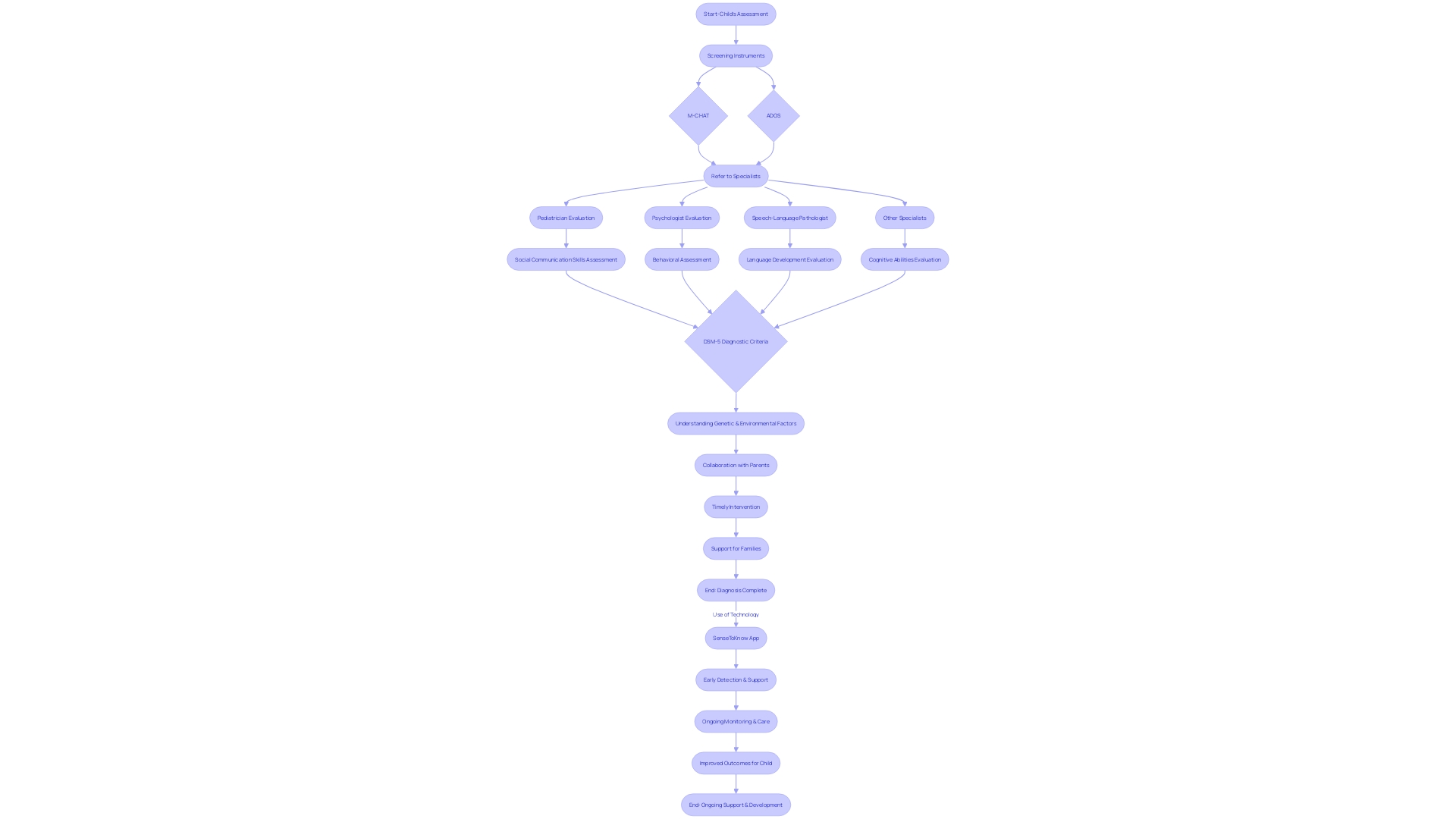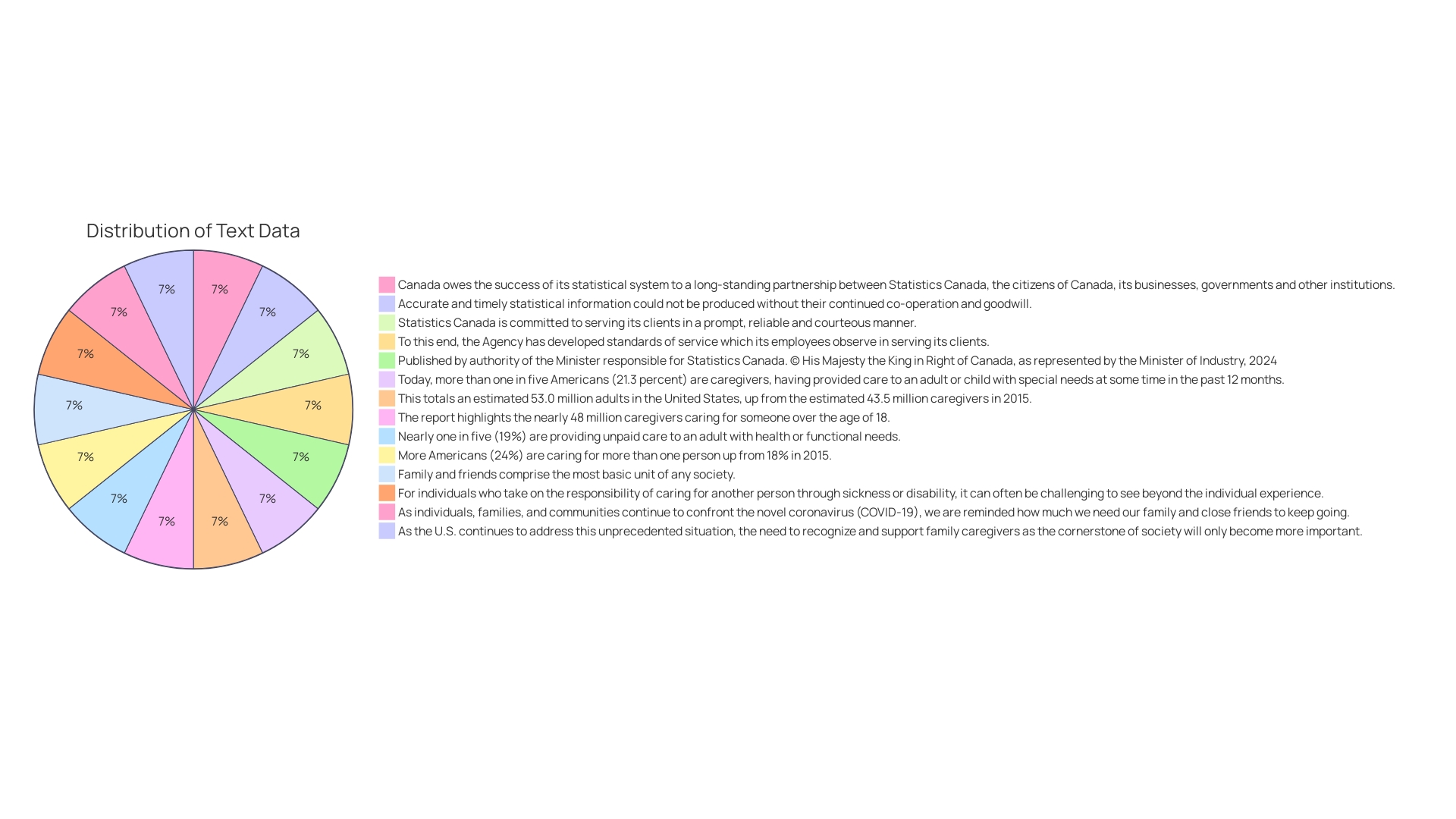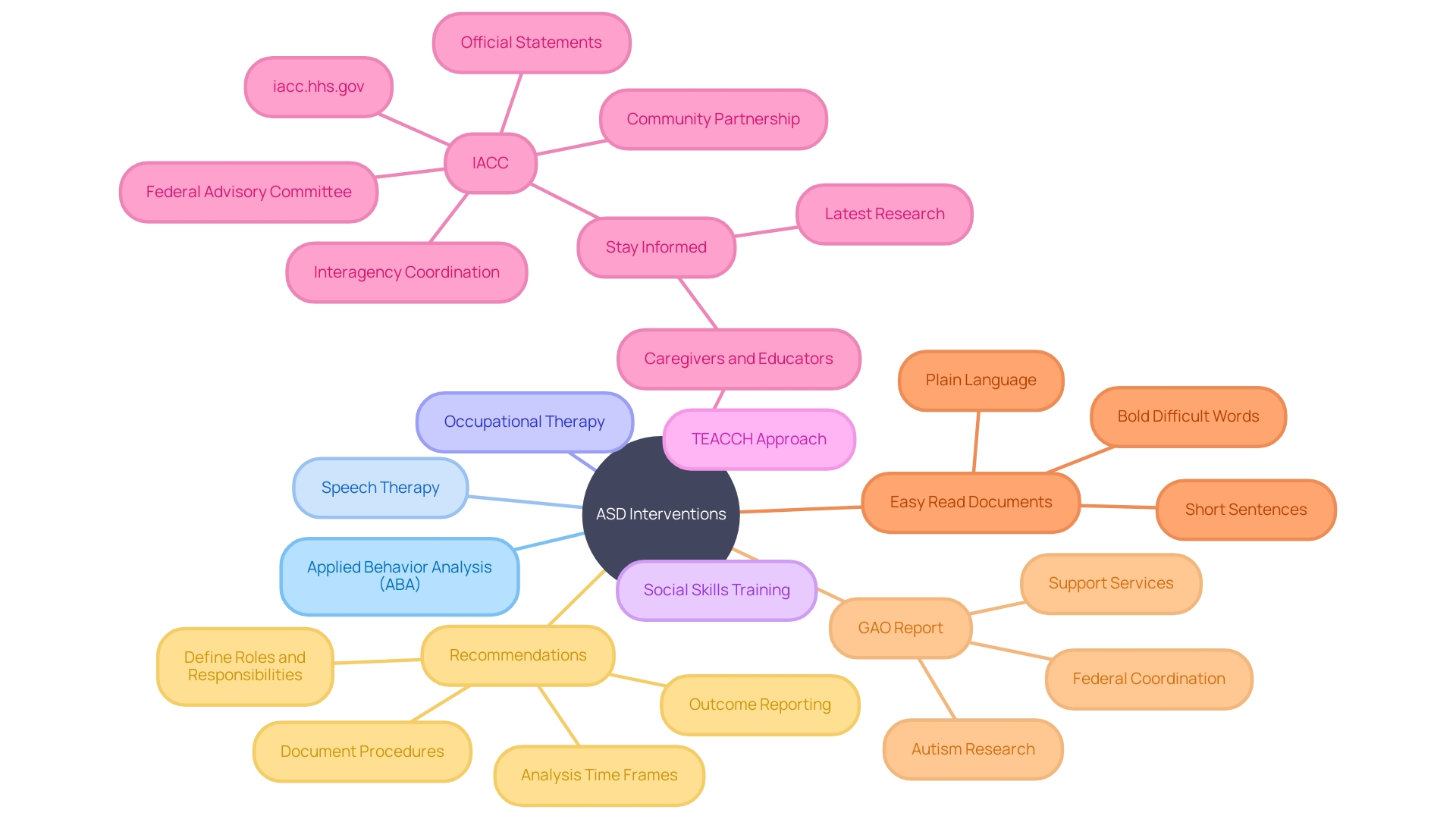Introduction
Autism Spectrum Disorder (ASD) is a complex neurodevelopmental disorder that presents a wide range of behavioral, social, and communicative traits. It is characterized by persistent challenges in social interaction and the presence of restricted, repetitive behaviors. With a prevalence of 1 in every 36 individuals, ASD affects people to varying extents, making each person's experience unique.
While the exact causes of ASD are still under investigation, genetic factors play a significant role. Early diagnosis is crucial in providing individuals with the necessary resources and support to lead fulfilling lives. Advances in technology, such as AI, are also promising in facilitating earlier diagnosis.
By understanding and embracing the diverse abilities and contributions of those on the autism spectrum, we can create an inclusive environment that supports their well-being.
What is Autism Spectrum Disorder (ASD)?
Autism Spectrum Disorder (ASD) encompasses a wide array of conditions that manifest through varying behavioral, social, and communicative traits. This neurodevelopmental disorder is primarily identified by persistent challenges in social interaction across multiple settings, and by having restricted, repetitive behaviors, interests, or activities. ASD is diagnosed using criteria from the American Psychiatric Association's Diagnostic and Statistical Manual (DSM-5), which includes specific behavioral patterns such as echolalia, a strong preference for routine, intense fixation on interests, and unusual sensitivity to sensory input.
The prevalence of ASD is notable, with recent CDC estimates suggesting occurrence in 1 out of every 36 individuals. Understanding that ASD is a spectrum, it presents distinctively in each person, thus impacting individuals to different extents. Brain scans have indicated differences in brain structure between those with ASD and neurotypical development, although the exact causes remain under investigation.
Genetic factors are considered significant given the patterns observed in families. However, it's critical to dispel myths such as the association of vaccines with the cause of ASD. Early diagnosis is pivotal as it opens doors to resources and support that enable individuals with ASD to lead fulfilling lives.
This is exemplified by a study involving dizygotic twins with 'level 3 severity' autism, emphasizing the necessity for substantial support. Advances in technology, like AI, are also promising in facilitating earlier diagnosis, as noted in recent research. As we continue to explore and understand this complex condition, it's important to recognize that people with autism can lead productive and meaningful lives with the appropriate support.
Characteristics of Autism Spectrum Disorder
Autism spectrum disorder (ASD) is a complex condition that presents a variety of challenges and strengths for each individual it touches. While some may face hurdles with social communication, such as interpreting social cues or sustaining a conversation, others may excel in areas like writing or editing, where focus and detail orientation are key. The diversity of experiences within the autism community is exemplified by stories of isolation in childhood, as with one individual's recollections of growing up in Kawartha Lakes, Canada, pointing to the unique social experiences of those on the spectrum.
Moreover, repetitive behaviors and deep interests in certain subjects are hallmark traits of ASD. These can manifest as echolalia—repeating sounds or phrases—or an unwavering focus on specific topics. Sensory sensitivities also play a role, with some individuals seeking more intense stimulation, while others may have a lesser response to sensory input.
Navigating changes in routine or transitions can also be particularly challenging.
Understanding ASD is crucial, as it affects an estimated 1 in 36 individuals, according to the CDC. Acknowledging the spectrum nature of autism and the varied degree to which it affects individuals is a step towards embracing the neurodiversity that enriches our society. Through early diagnosis and accessing the right resources, individuals with autism can lead fulfilling lives.
The collective effort to recognize and support the neurodivergent community is demonstrated by initiatives like the National Geospatial-Intelligence Agency's neurodiversity pilot, which aims to harness the unique perspectives and skills of autistic individuals.
It is important to dispel myths regarding the causes of autism; it is not linked to vaccines or parenting styles but is associated with differences in brain structure or function. As we continue to explore the vast spectrum of autism, we grow closer to fostering an inclusive environment where every person's experience is valued.
Types of Autism Spectrum Disorder
Autism spectrum disorder (ASD) encompasses a broad range of conditions characterized by challenges with social skills, repetitive behaviors, speech, and nonverbal communication. The diversity within the spectrum means that each individual with autism has a distinct set of strengths and challenges. The ways in which people with autism learn, think, and problem-solve can range from highly skilled to severely challenged.
Previously, conditions such as autistic disorder, Asperger's syndrome, and pervasive developmental disorder not otherwise specified (PDD-NOS) were recognized as separate diagnoses. However, with the advent of the Fifth Edition of the Diagnostic and Statistical Manual of Mental Disorders (DSM-5), these subcategories have been unified under the single umbrella term of ASD.
This shift reflects a deeper understanding of the condition as a spectrum, where the severity of symptoms can vary extensively among individuals. For instance, some people may be fully verbal and possess average or above-average intelligence, which was often referred to as 'high functioning autism.' Yet, they might still encounter significant challenges in social communication and exhibit sensory sensitivities or specific repetitive behaviors.
Considering the complexity of ASD, interventions like neurofeedback training have been explored, which use non-invasive techniques to optimize brain function. Such therapies might improve cognitive abilities, mood regulation, and attention, which can be particularly beneficial for individuals with autism, about 30% of whom also have epilepsy.
As we continue to evolve our understanding of ASD, it's essential to recognize the individuality of each person with autism. Whether through medical research, educational practices, or societal acceptance, the goal is to support and celebrate the unique abilities and contributions of those on the autism spectrum.
Causes and Risk Factors of Autism
Autism Spectrum Disorder (ASD) is characterized by a diverse set of behaviors and challenges in communication and social interactions, as well as restricted and repetitive patterns of behavior. The condition manifests differently among individuals, placing it on a spectrum with varying degrees of impact on daily functioning. While the exact causes of autism remain a complex mystery, it is acknowledged to result from a confluence of genetic, environmental, and neurological factors.
Scientists have observed that brain scans of individuals with autism often reveal distinct structural differences when compared to neurotypical development, hinting at the underlying neurological variances associated with the condition.
Although there is no single identifiable cause, certain risk factors have been associated with an increased likelihood of a child developing autism. These factors include advanced age of parents at the time of conception, certain genetic mutations, and exposure to specific medications or environmental agents during pregnancy. Importantly, complications during pregnancy or birth have also been implicated as potential contributing elements.
It is critical to dispel the myths surrounding autism's origins; notably, there is a robust consensus in the scientific community that vaccines do not cause autism, nor do parenting styles or nutritional choices.
Early identification and diagnosis of autism are crucial, as they pave the way for early intervention which can significantly enhance the quality of life for those with ASD. The condition is diagnosed based on the criteria listed in the American Psychiatric Association's Diagnostic and Statistical Manual (DSM-5), which includes persistent differences in communication and social interaction across multiple settings, as well as the presence of restricted and repetitive behaviors. Understanding the signs and symptoms of autism can aid in early detection, which is estimated to affect as many as 1 in 36 individuals according to the Centers for Disease Control and Prevention (CDC).
Diagnosis and Screening of Autism
The pathway to diagnosing autism spectrum disorder (ASD) is a collaborative journey involving a multidisciplinary team of experts. This team may include psychologists, pediatricians, speech-language pathologists, and other specialists who work together to assess the child's social communication skills, language development, cognitive abilities, and behavior. No single assessment tool captures the complexity of ASD; rather, a combination of screening instruments like the Modified Checklist for Autism in Toddlers (M-CHAT) and the Autism Diagnostic Observation Schedule (ADOS) may be utilized to identify early signs and inform a more thorough evaluation.
Studies highlight the importance of understanding the interplay between genetic and environmental factors in the emergence of ASD. With only a minority of individuals diagnosed before age 5 capable of independent adulthood, the stakes for early and accurate diagnosis are high. The American Psychiatric Association's DSM-5 offers standardized diagnostic criteria, while emphasizing that both parental insights and professional observations are critical to the process.
In some cases, primary care providers may refer families to specialized professionals for further assessment.
The significance of timely intervention is underscored by the promising developments in diagnostic methodologies. Innovations such as the SenseToKnow app, which uses an AI-generated algorithm to assess a range of behaviors associated with autism, are revolutionizing early detection. These advancements are crucial, as research shows the earlier behavioral therapy is initiated, the better the outcome.
This is particularly true for families with an existing history of ASD, who face a substantially increased risk. With organizations like The Autism Community in Action (TACA) supporting families and paving the way for early interventions, the future holds promise for those navigating the complexities of ASD diagnosis and support.

Symptoms and Behaviors Associated with Autism
Autism Spectrum Disorder (ASD) manifests in a multitude of behaviors, presenting a spectrum of challenges that affect individuals uniquely. A person with ASD might find social interactions daunting, facing hurdles with common social behaviors like sustaining eye contact or interpreting body language. These difficulties extend to forging and nurturing relationships with peers.
Alongside social intricacies, repetitive actions or intense focus on specific interests are hallmark signs of ASD. Sensory experiences can also be atypical, with individuals displaying heightened or diminished responses to sensory stimuli.
The range of these symptoms underscores the importance of understanding ASD as a spectrum, where impacts vary significantly from person to person. As per the American Psychiatric Association's DSM-5, ASD is characterized by enduring differences in communication and social interaction across diverse contexts, which may be evident in consistent patterns of behavior, interests, or activities. Examples include echolalia, the repetition of sounds or phrases, a penchant for uniformity, and difficulties adjusting to changes in routine or environment.
Brain scans have revealed structural differences in the brains of those with ASD compared to neurotypical individuals, supporting the theory that neurological variances underpin this condition. Although the root causes of ASD remain elusive, research continues to explore genetic and environmental factors, debunking myths that vaccines, parenting practices, or nutrition are to blame.
Statistics reflect that as many as 1 in 36 individuals are on the autism spectrum, a figure that highlights the urgent need for early diagnosis. Early identification of ASD can unlock access to vital resources and support, facilitating choices and opportunities that allow individuals to thrive. Awareness and advocacy for ASD have grown, yet the reality remains that some adults with autism may have lived without a diagnosis or with a misdiagnosis, only recognizing the signs later in life.
Understanding these signs, particularly in adults, is crucial for those who may have ASD or know someone who could be on the spectrum.
As we gain insights into the complexities of autism, we learn more about how the condition evolves from risk factors to the first symptoms. Early diagnosis is a gateway to early intervention, which can significantly improve outcomes. Despite strong genetic predispositions, the interplay of environmental elements also influences the development and severity of ASD.
The collective efforts of researchers like Naviaux are deepening our grasp on how autism unfolds through the dynamic intermingling of these factors.
Impact on Caregivers and Families
Navigating the journey of autism care requires understanding, patience, and the right support. For caregivers and families, it means adapting to the specific needs of a child with autism and ensuring their participation in school, home, and leisure activities, which is vital for their mental health and equity in society. Dr. David (Dan) R. Offord, a child psychiatrist, emphasized the importance of a fair and supportive environment for all children, including those with disabilities, to thrive.
Families often face the time-consuming task of translating medical information and managing administrative tasks, which can lead to stress and burnout. Innovations like Summer Health's text-based pediatric care simplify access to medical advice, and the meticulous documentation of medical visits ensures continuity of care. This is crucial because caregivers shoulder the responsibility of understanding and managing their child's medications and treatments, which involves weighing benefits against risks and observing behavioral changes.
Staying informed with the latest research and therapeutic approaches is a continuous process, and caregivers must discern reliable information from misleading online narratives. It is also essential to foster a positive perception of autism within the child, countering any negative connotations associated with the diagnosis. Resources such as a free guide on the best autism resources for parents can be invaluable in this respect.
The broader societal impact of caregiving is significant, with over one in five Americans serving as caregivers. The recent pandemic has heightened the challenges for these families, especially those from underrepresented communities. To support the well-being of children with autism and their families, it is crucial to acknowledge their unmet needs, reduce chronic stress, and provide resources that support healthy development and family resilience.

Treatment and Intervention Options
Autism spectrum disorder (ASD) is a complex condition that manifests in a variety of ways, influencing behavior, social interaction, and communication. While ASD is lifelong, strategies such as Applied Behavior Analysis (ABA), speech and occupational therapies, and social skills training can play crucial roles in enhancing the lives of individuals with autism. These interventions are most effective when personalized to address each person's distinctive abilities and challenges, acknowledging their individuality.
The pursuit of equity in mental health, as emphasized by Dr. David (Dan) R. Offord, is akin to making the race of life fair for all children, including those with autism. This involves ensuring that children with autism actively participate in essential aspects of life, such as school and community activities. Recognizing their strengths and addressing their needs, while alleviating chronic stress, is essential.
Providing resources to caregivers enables them to foster a nurturing environment for the growth and well-being of their family.
It's imperative that educational treatments, like the Treatment and Education of Autistic and Related Communication-Handicapped Children (TEACCH) approach, are incorporated. TEACCH's philosophy is that structured and visually-oriented learning benefits individuals with autism. Adjusting classroom settings, visually representing routines, and providing clear instructions enhance learning outcomes and social skills.
To stay informed and offer the best support, caregivers and educators must remain updated on the latest research and interventions. It is crucial to understand the implications of each treatment and medication prescribed, balancing benefits against potential risks. The Interagency Autism Coordinating Committee (IACC) collaborates with various stakeholders to expedite advancements in autism-related research and services, ensuring that efforts are in line with the needs of the autism community.

Conclusion
In conclusion, Autism Spectrum Disorder (ASD) is a complex neurodevelopmental disorder with a wide range of behavioral, social, and communicative traits. Early diagnosis is crucial for providing support and resources to individuals with ASD. While genetic factors play a significant role, the exact causes of ASD are still under investigation, and it is important to dispel myths surrounding its origins.
ASD presents a spectrum of challenges and strengths, with individuals experiencing difficulties in social communication and exhibiting repetitive behaviors and intense interests. By embracing neurodiversity and understanding the unique abilities of those on the autism spectrum, we can create an inclusive environment that supports their well-being.
Early intervention and access to resources are crucial for improving outcomes for individuals with ASD. Advances in diagnostic technologies, such as AI-generated algorithms, are revolutionizing early detection, enabling timely intervention.
Collaborative efforts among multidisciplinary teams are essential in the diagnostic process. Treatment options for ASD, such as Applied Behavior Analysis (ABA) and speech and occupational therapies, can help individuals develop their unique strengths and overcome challenges. Personalized approaches that address each individual's needs are important.
By understanding and supporting individuals with ASD, we can create a society that values and celebrates their unique abilities. Through early diagnosis, access to resources, and personalized interventions, individuals with ASD can lead fulfilling lives. It is crucial to continue research, stay informed, and collaborate with stakeholders to provide the best support for individuals with ASD and their families.




